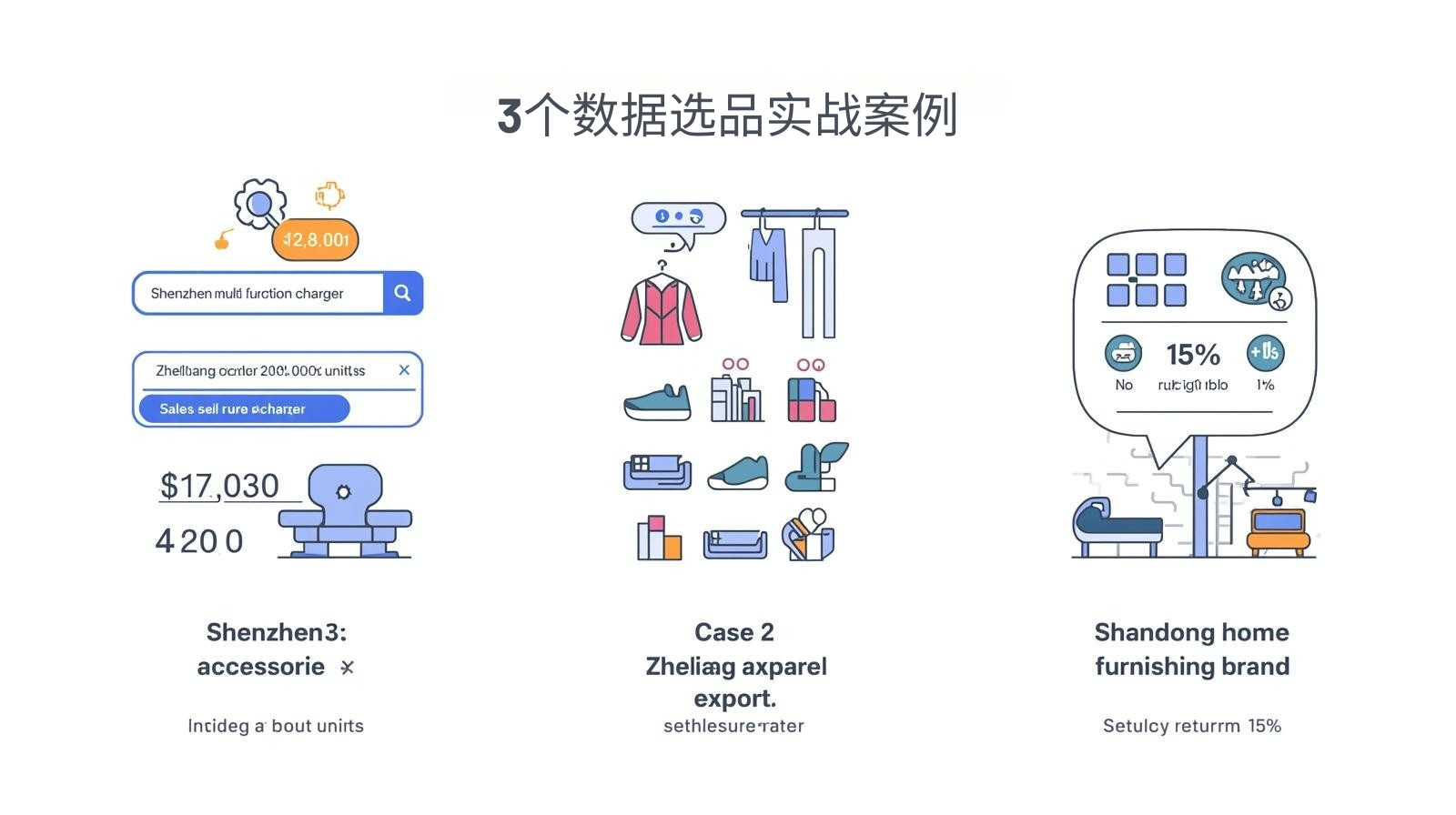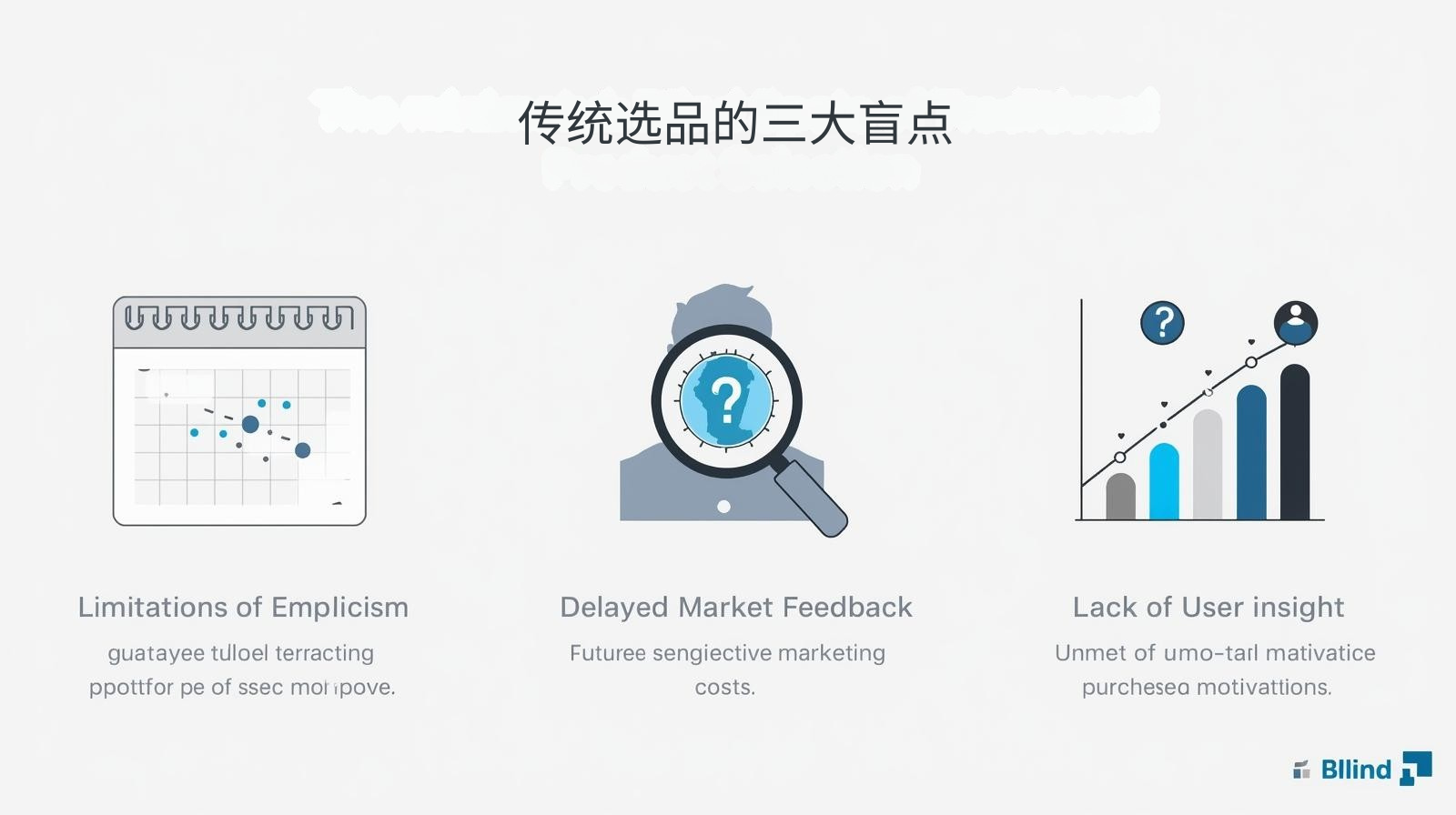Nielsen's "2024 Global E-commerce Product Selection Report" shows that independent websites using data-driven product selection have a 60% increase in product selection success rate and a 45% decrease in the rate of new product slow sales. A survey by the China Council for the Promotion of International Trade indicates that foreign trade companies that systematically utilize product selection data have a 35% share of hit products, far exceeding the industry average. Analysis by the World E-Commerce Forum emphasizes that independent websites' comprehensive user behavior data makes product selection three times more accurate than traditional methods.
 Three Blind Spots of Traditional Product Selection
Three Blind Spots of Traditional Product Selection
1. Limitations of empiricism
- The subjective judgment error rate reaches 40% (China Chamber of Commerce for Import and Export of Machinery and Electronic Products case)
- Unable to predict emerging trends
2. Delayed market feedback
- Reliance on quarterly survey data (a home furnishing brand missed the peak season window)
- High trial sales costs
3. Lack of user insights
- Not understanding the real purchasing motivation
- Ignoring long-tail demand
Five golden dimensions for data selection
1. Search term gold mine
- On-site search term analysis (a tool brand discovered hidden demand and developed new products)
- Long-tail keyword mining tool
2. Behavioral Path Insights
- Length of time spent on product pages (predicting purchase intent)
- Cross-category browsing associations
3. Competitive Benchmarking Analysis
- Conversion rate comparison of similar products
- Price band blank spot discovery
4. User-Generated Content
- Comment sentiment analysis (improvement direction)
- Tracking hot topics in community discussions
5. Supply Chain Data
- Dynamic monitoring of procurement costs
- Logistics efficiency evaluation
 3 practical cases of data product selection
3 practical cases of data product selection
Case 1: Shenzhen 3C accessories supplier
- Analyze the search term "multi-function charger" to develop new products
- Sales volume exceeded 20,000 pieces in the first month
Case 2: Zhejiang clothing foreign trade
- User browsing path reveals sports and leisure trend
- The new series has a sold-out rate of 95%.
Case 3: Shandong home furnishing brand
- Analyze negative reviews to improve product design
- Return rate dropped from 15% to 6%
Pinshop Solution
Pinshop provides: ✅ Demand mining system ✅ Competitive product analysis dashboard ✅ Supply chain assessment module ✅ Predictive modeling tool
Visit Pinshop’s official website now and use data to discover hot products!
Recommended related articles: Multilingual Independent Station Strategy: Balancing Localization and Internationalization 






